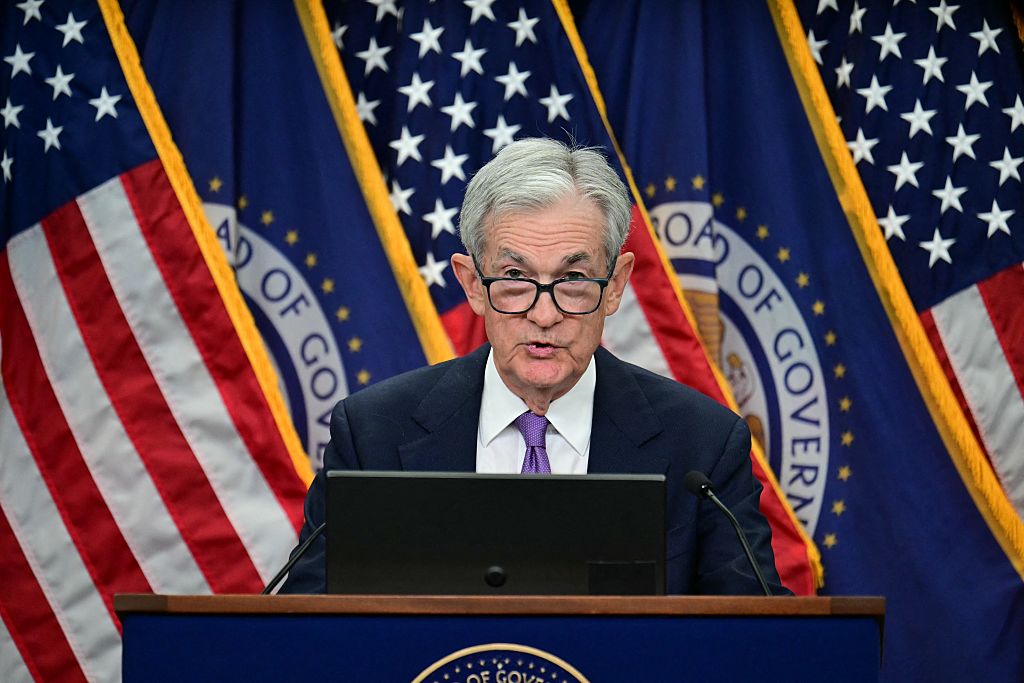Future U.S. Economic Growth Hinges on Immigrants
With the native birthrate slipping, employers are increasingly relying on foreign-born workers to staff up.


To help you understand what is going on in the economy, our highly experienced Kiplinger Letter team will keep you abreast of the latest developments and forecasts (Get a free issue of The Kiplinger Letter or subscribe). You'll get all the latest news first by subscribing, but we will publish many (but not all) of the forecasts a few days afterward online. Here’s the latest…
Immigration is a major political issue ahead of the elections, especially illegal immigration. It’s also a vital economic issue these days. The workforce depends on immigrants to a greater extent than it typically has in the past, and that shows no sign of changing, as the number of native-born workers flattens and eventually shrinks.
The foreign-born share of the workforce: 19.2%. That’s up from 17.7% in 2019. Over the past four years, the entire increase in the labor pool has been driven by immigrants: 3.4 million of them, vs. 438,000 fewer workers who were born in the U.S. The growth is from a mix of legal and illegal immigration, with the lion’s share coming after pandemic-related restrictions ended.
From just $107.88 $24.99 for Kiplinger Personal Finance
Become a smarter, better informed investor. Subscribe from just $107.88 $24.99, plus get up to 4 Special Issues

Sign up for Kiplinger’s Free Newsletters
Profit and prosper with the best of expert advice on investing, taxes, retirement, personal finance and more - straight to your e-mail.
Profit and prosper with the best of expert advice - straight to your e-mail.
Most immigrant workers are here legally: 32 million of them are either naturalized citizens or green card holders who have been here awhile. By contrast, there are roughly 10 million immigrants who are here illegally and working or trying to work. Foreign workers fill many high-skilled jobs — such as doctors, engineers, tech workers, scientists, etc. — and lower-skilled positions like agricultural workers, custodians, food-service employees, construction crews, personal-care roles like health aides, and manufacturing workers.
Pay varies widely. Those with college degrees earn more on average than native-born workers with college degrees, likely because they tend to cluster in high-wage sectors like IT and medicine. Low-skilled foreigners earn less on average than people born here who don’t have college degrees: About 10% less, typically.
Why does this matter? The economy’s future growth depends on immigration. There simply aren’t enough native-born young adults joining the workforce to make up for those aging out. As in many countries, the fertility rate in the U.S. has been below the level needed to keep the population stable for many years now. Immigration has made up the difference, enabling the economy to keep growing. (The other driver of economic growth, productivity gains, is helping, but not enough.)
Whoever wins the presidential election will have to contend with this reality. Donald Trump has run on curbing immigration, both legal and illegal. That could ease the chaos at the southern border, but could also deprive employers of the legal foreign-born workers many industries rely on, worsening labor shortages. Joe Biden is unlikely to change course significantly if he wins reelection. That would imply more immigrants to hire, but also more illegal immigration problems while neglecting to hike visas for skilled immigrants, for which many firms are begging. Ultimately, Congress needs to act and reform our dysfunctional system, control the border and ensure enough legal newcomers to keep the economy growing. Unfortunately, the situation likely will have to get worse before lawmakers step up.
This forecast first appeared in The Kiplinger Letter, which has been running since 1923 and is a collection of concise weekly forecasts on business and economic trends, as well as what to expect from Washington, to help you understand what’s coming up to make the most of your investments and your money. Subscribe to The Kiplinger Letter.
Profit and prosper with the best of Kiplinger's advice on investing, taxes, retirement, personal finance and much more. Delivered daily. Enter your email in the box and click Sign Me Up.

David is both staff economist and reporter for The Kiplinger Letter, overseeing Kiplinger forecasts for the U.S. and world economies. Previously, he was senior principal economist in the Center for Forecasting and Modeling at IHS/GlobalInsight, and an economist in the Chief Economist's Office of the U.S. Department of Commerce. David has co-written weekly reports on economic conditions since 1992, and has forecasted GDP and its components since 1995, beating the Blue Chip Indicators forecasts two-thirds of the time. David is a Certified Business Economist as recognized by the National Association for Business Economics. He has two master's degrees and is ABD in economics from the University of North Carolina at Chapel Hill.
-
 Stocks Struggle for Gains to Start 2026: Stock Market Today
Stocks Struggle for Gains to Start 2026: Stock Market TodayIt's not quite the end of the world as we know it, but Warren Buffett is no longer the CEO of Berkshire Hathaway.
-
 Tip: Ways to Track Your Credit Card Rewards
Tip: Ways to Track Your Credit Card RewardsHere are the best strategies and apps to help you stay current with your credit card rewards.
-
 How New Investors Can Pick Their Perfect Portfolio, According to a Pro
How New Investors Can Pick Their Perfect Portfolio, According to a ProSee what Cullen Roche has to say about finding your perfect portfolio as a new investor and his two-word answer on where he thinks the stock market is headed in 2026.
-
 Special Report: The Future of American Politics
Special Report: The Future of American PoliticsThe Kiplinger Letter The Political Trends and Challenges that Will Define the Next Decade
-
 The November CPI Report Is Out. Here's What It Means for Rising Prices
The November CPI Report Is Out. Here's What It Means for Rising PricesThe November CPI report came in lighter than expected, but the delayed data give an incomplete picture of inflation, say economists.
-
 What to Expect from the Global Economy in 2026
What to Expect from the Global Economy in 2026The Kiplinger Letter Economic growth across the globe will be highly uneven, with some major economies accelerating while others hit the brakes.
-
 December Fed Meeting: Updates and Commentary
December Fed Meeting: Updates and CommentaryThe December Fed meeting is one of the last key economic events of 2025, with Wall Street closely watching what Chair Powell & Co. will do about interest rates.
-
 Are New Trump $2,000 Stimulus Payments Coming in 2026? What to Know Now
Are New Trump $2,000 Stimulus Payments Coming in 2026? What to Know NowTax Policy A promise of $2,000 tariff dividend checks is raising questions and fueling confusion.
-
 Shoppers Hit the Brakes on EV Purchases After Tax Credits Expire
Shoppers Hit the Brakes on EV Purchases After Tax Credits ExpireThe Letter Electric cars are here to stay, but they'll have to compete harder to get shoppers interested without the federal tax credit.
-
 October Fed Meeting: Updates and Commentary
October Fed Meeting: Updates and CommentaryThe October Fed meeting is a key economic event, with Wall Street turned into what Fed Chair Powell & Co. did about interest rates.
-
 The Delayed September CPI Report is Out. Here's What it Signals for the Fed.
The Delayed September CPI Report is Out. Here's What it Signals for the Fed.The September CPI report showed that inflation remains tame – and all but confirms another rate cut from the Fed.